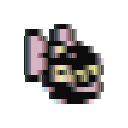Allagmatic Organology of Postwar Psychic Interface
This research excavates the technical genealogy underlying contemporary human-computer interaction through a philosophical archaeology of personal media devices, from the Sony TR-63 transistor radio through the iPod to today's smartphones. By tracing the evolution of these "artificial organs" along three critical dimensions—temporal encoding, selective attunement, and spatial reticulation—the work reveals how personal computing devices have progressively restructured the relationship between individual consciousness and technological mediation. The analysis demonstrates how each phase transition in media technology has reorganized not just how we access information, but how we construct interiority itself through our selective engagement with technical objects.
The model constructed here builds on Gilbert Simondon's theory of technical individuation to show how personal devices have evolved from abstract tools toward what he calls "privileged points" that reintegrate technical functionality with lived experience. This theoretical framework illuminates a critical tension in contemporary interface design: how digital technologies can either fragment human experience through abstract manipulation or restore meaningful integration between technical and aesthetic dimensions. Focus on the progressive automation of selection, from manual radio tuning to algorithmic curation, reveals the stakes of current AI-driven interface paradigms.
This historical analysis provides essential context for understanding the theoretical foundations of the Field project and its approach to psychic interface design. While Field introduces a new compositional medium for human-AI collaboration, this research reveals how we arrived at the present moment where such radical reimagining of the interface becomes both possible and necessary. The work's examination of how personal devices have historically mediated between individual consciousness and technical systems directly informs Field's vision of moving beyond linear, step-by-step interaction toward distributed, recursive forms of technical interface.

